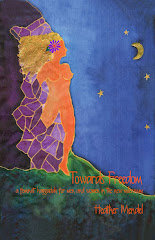In his new book, The Lost Sign, Dan Brown informs us that the world is certainly stranger than we know. Members of the ancient fellowship of Free Masons are divided as to the meanings of the symbols of their tradition. Ancient signs are mythic and multi-layered and meet the observer at whatever level they are encountered. It was ever thus and is as timely as it is timeless. Quantum physicists are showing the validity of this concept as they explore the world on a subatomic level. The observer may affect the results of laboratory experiments. Are we seeing the meeting of science and spirituality?
Nothing is as it appears. Surface and substance — which is real? An ancient Buddhist teaching reminds us that the finger pointing at the moon is not the moon, and unless we move our focus away from the finger, and focus on the direction of where the moon is, we miss the splendor in the night-time sky. In a totally contemporary setting, we are confronted with the multi-layered world of twitter. As novices, what appears as a disconnected cacophony of signs and symbols carries layers of information. One ‘tweet’ does not follow another in conversation-like fashion of she-says, he-says. The short bursts of no more than 140 letters contain cryptic codes, apparently random events sent out to invisible audiences of people we have never met and likely never will. These messages contain strata of meaning and information that initiates are able to follow, at lightening speed no less.
In learning the language that connects them, people are able to find like-minded compatriots all around the globe and share information that is important to them, from the most mundane, such as where to get the most delicious chocolate in the neighborhood to satisfy the body, to the most profound concepts that inspire readers with courage, hope and empowerment to satisfy the soul.
Our language and communication skills are getting shorter and faster, closing vast distances of geography and society, as the communication net we cast out reaches further than before. Long gone are the days of the pleasure of receiving a long awaited letter in the mail. So much is changing so quickly. News is no longer news 24 hours later, which means newspapers were replaced by TV news, which is now getting its instantaneous information by e-news. Shopping in stores now being conducted online, and like-minded people all over the world connect through a gadget that fits into the palms of our hands.
Authors are discovering that it is no longer the reviews of professionals that build readership, rather it is the words of readers, you and me, that will encourage one another on enjoy what we have found meaningful.
For some, this is daunting, for others exciting. There are benefits and dangers to this e-age, multiple possibilities that are affected by the senders and receivers of these apparently cryptic messages. A strange new world indeed!
Saturday, October 17, 2009
Subscribe to:
Posts (Atom)


